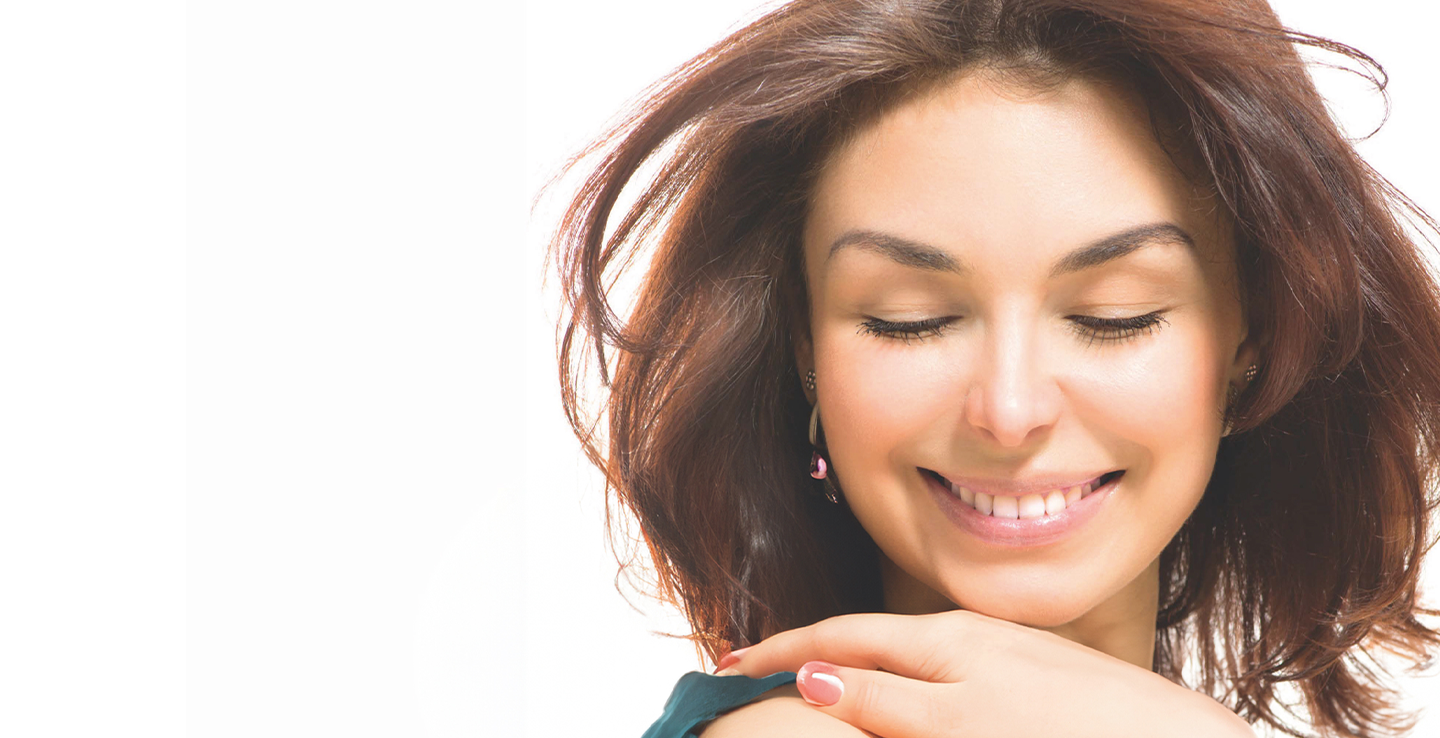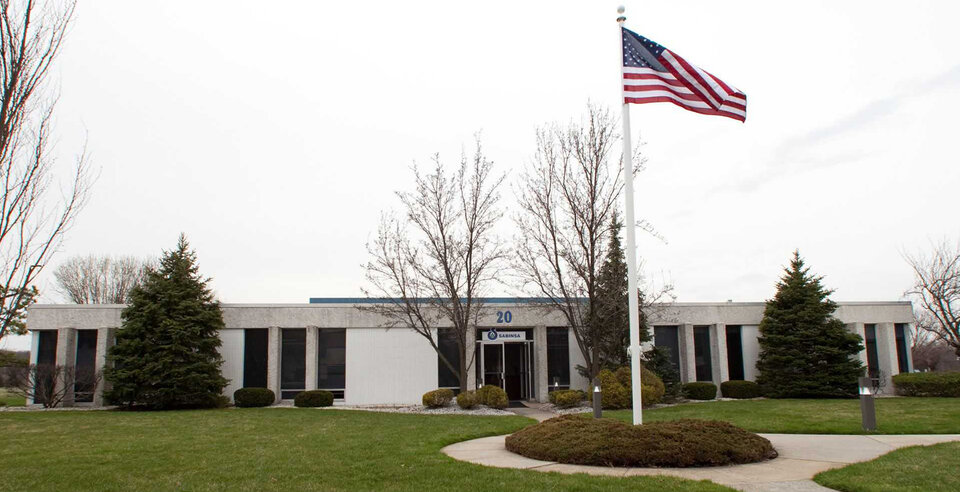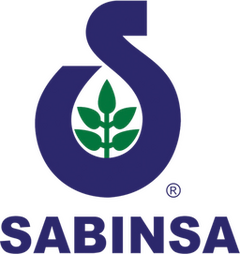LactoSporin®
An effective postbiotic for youthful skin
Natural astaxanthin for a healthy, glowing skin
Have you ever seen a puddle of water that seemed to be turning red? Or a dark red stain in a bird bath or fountain? You might have been looking at algae making astaxanthin. They make it when times are hard – when their puddle is drying out, nutrients are low, or the sunlight is too intense. It helps them survive harsh conditions, and as it turns out, we can learn from them.
MUHAMMED MAJEED
Founder and Chairman Sami-Sabinsa Group Limited
Aging is a natural inevitable process and follows different trajectories in organs among which skin shows amble evidence of passing time. Skin aging is a complex biological process influenced by the cumulative effects of intrinsic (genetics, cellular metabolism, hormone and metabolic processes) and extrinsic factors (chronic light exposure, pollution, ionizing radiation, chemicals, toxins) (1). Even though, the symptoms of skin aging are different for person-to-person, the typical changes include the development of fine lines and wrinkles, loss of elasticity, rough texture, and discoloration. The reduction in extracellular matrix (ECM), especially collagen content, is a common feature of skin aging (2). Aging also disrupts the finely balanced ecosystem of the skin accelerating the process of aging. Significant changes in the composition and distribution of skin microflora occurs during aging. Hence, protecting the natural microbiome of the skin is vital to maintain the skin strong and healthy.

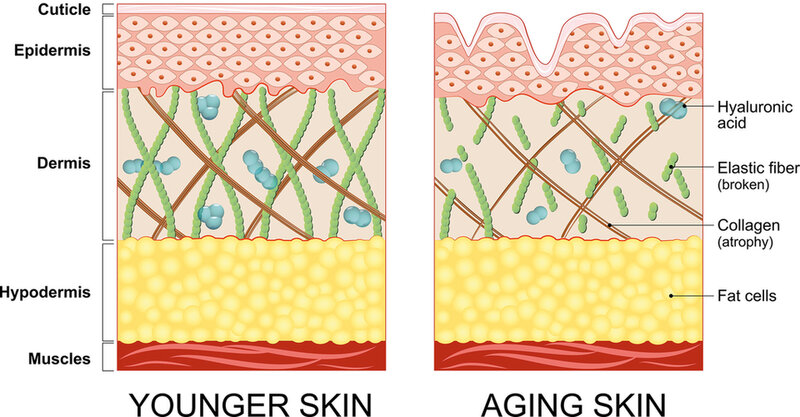
The natural microflora interact with the skin cells using a complex network of molecules including exopolysaccharides, biosurfactants, enzymes, peptides, and vitamins reinforcing skin defences, promoting barrier function and other beneficial effects (3). Postbiotics are the fermentation products or metabolites of probiotics that support the good bacteria on the skin but offers better stability and safety compared to the probiotics. Even though, postbiotics have become a trending topic of research to the cosmetic industry, the scientific evidences are still in infancy. Sabinsa’s postbiotic, LactoSporin® comes up with well documented preclinical and as well as clinical evidences for its potent skin protective and antiaging effects. LactoSporin® is the purified culture supernatant of the probiotic strain Weizmannia coagulans (Bacillus coagulans)MTCC 5856 (LactoSpore®) using a patented process with an INCI name of Bacillus ferment filtrate extract. Weizmannia coagulans MTCC 5856 is a non-Genetically Modified Organism (non-GMO) with US FDA reviewed Generally Recognized as Safe (GRAS) status.
SALIENT FEATURES OF LACTOSPORIN®
- Non-mutagenic
- Stable in acidic pH
- Thermal stability at 90°C for 30 minutes
- Dermal or ocular non-irritant
- Shelf life of 1 year
- Reproducible composition
- BSE/TSE-free
- GMO-free
- Patented
- Safe
ANTI-AGING EFFECTS OF LACTOSPORIN: PRECLINICAL STUDIES (4, 5)
LactoSporin® protected the skin cells from oxidative stress in vitro without affecting cell viability.
- LactoSporin® provided significant protection from UV damage.
- LactoSporin® enhances skin firmness and reduces skin sagging.
- LactoSporin® enhances skin hydration.
- LactoSporin® prevents skin pathogens and reduces acne.

Figure 1. Antiaging effects of LactoSporin®(5).
Human Clinical Study
LactoSporin® showed skin protective activity in cell-based studies and hence a randomized, double-blind, placebo controlled, monocentric study was conducted to evaluate the efficacy and safety of the LactoSporin® on age related changes in the skin of healthy female participants (CTRI Registration number: CTRI/2022/01/039292 registered on: 10/01/2022). All the participants were instructed to apply LactoSporin® or Neutral base cream on face, twice daily, once in the morning (after bath or after the facewash in the morning and then they leave it for the whole day till the evening face wash) and at night before bed for 10 weeks. The appearance of skin in terms of signs of aging was assessed by dermatological and instrument-based methods. The regular use of LactoSporin® cream showed a significant reduction in visibility of wrinkles around crow’s feet, nasolabial folds, frown lines, and facial fine lines. LactoSporin® also showed improvement in skin elasticity and hydration (Figure 2).
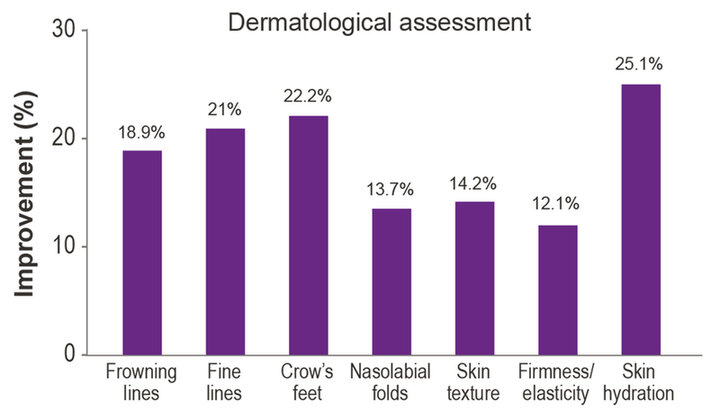
Figure 2. LactoSporin® showed significant improvement on the age related skin changes compared to baseline as determined dermatologically (6).
Instrumental assessment
Antera assessment showed that topical application of LactoSporin® cream significantly reduced the forehead wrinkles, texture, crow’s feet wrinkles, nasolabial folds and under eye fine lines compared to the baseline. Skin elasticity parameters (gross elasticity, net elasticity and recovery after deformation) were recorded using the Cutometer. All three parameters of elasticity increased significantly in both placebo and LactoSporin® groups after 10 weeks of application n (p<0.001). The extent of improvement was relatively higher in LactoSporin® compared to Placebo (Figure 3).
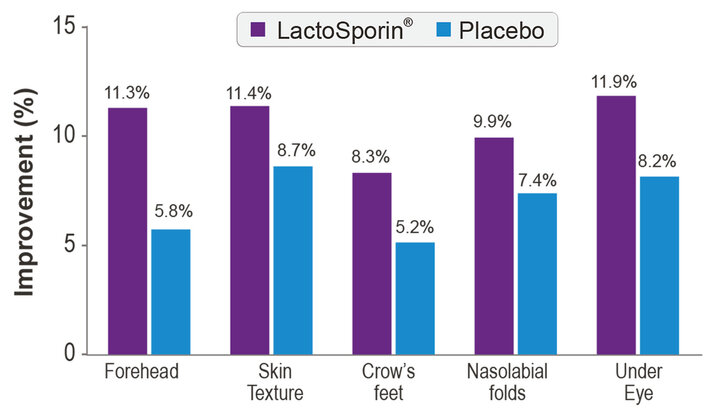
Figure 3. Instrumental assessment showed that LactoSporin® is effective in improving the age related skin changes compared to baseline.
- Self-assessment for skin tolerability and product acceptance
The participants performed self-assessment by viewing their faces in the mirror under controlled light conditions, with a set of questionnaires after 30 min of product application on their faces. 96.4% of the participants agreed that regular use of LactoSporin® made their skin firmer and moisturized while reducing fine lines and wrinkles.
- Safety assessments
- No adverse events or serious adverse events were reported in any of the participants during the study.
- None of the participants experienced any skin irritation
- Dermatological evaluations did not observe any allergic skin reactions
- LactoSporin® was found dermatologically safe in a Primary Skin Irritation Patch Test (PIPT)
CONCLUSION
The clinical study results showed that LactoSporin® could be an effective natural ingredient to cosmetic formulations for reducing fine lines and wrinkles. With no negative skin reactions, LactoSporin® is a safe addition to active antiaging skin care routine.
References and notes
- Ganceviciene, R., A. I. Liakou, A. Theodoridis, E. Makrantonaki and C. C. Zouboulis (2012). "Skin anti-aging strategies." Dermato-endocrinology4(3): 308-319. https://www.tandfonline.com/doi/full/10.4161/derm.22804
- Kohl, E., J. Steinbauer, M. Landthaler and R. M. Szeimies (2011). "Skin ageing." Journal of the European academy of dermatology and venereology25(8): 873-884. https://onlinelibrary.wiley.com/doi/10.1111/j.1468-3083.2010.03963.x
- Tsilingiri, K. and M. Rescigno (2013). "Postbiotics: what else?" Beneficial microbes4(1): 101-107. https://pubmed.ncbi.nlm.nih.gov/23271068/
- Majeed, M., S. Majeed, K. Nagabhushanam, L. Lawrence, S. Arumugam and L. Mundkur (2020). "Skin protective activity of LactoSporin-the extracellular metabolite from Bacillus coagulans MTCC 5856." Cosmetics7(4): 76. https://www.mdpi.com/2079-9284/7/4/76
- Majeed, M., S. Majeed, K. Nagabhushanam, L. Mundkur, H. Rajalakshmi, K. Shah and K. Beede (2020). "Novel topical application of a postbiotic, LactoSporin®, in mild to moderate acne: a randomized, comparative clinical study to evaluate its efficacy, tolerability and safety." Cosmetics7(3): 70. https://www.mdpi.com/2079-9284/7/3/70
- Majeed, M., K. Nagabhushanam, S. Paulose, H. Rajalakshmi and L. Mundkur (2023). "A Randomized Double-Blind, Placebo-Controlled Study to Evaluate the Anti-Skin-Aging Effect of LactoSporin–The Extracellular Metabolite from Bacillus coagulans (Weizmannia coagulans) MTCC 5856 in Healthy Female Volunteers." Clinical, Cosmetic and Investigational Dermatology: 769-782. https://www.ncbi.nlm.nih.gov/pmc/articles/PMC10066892/
